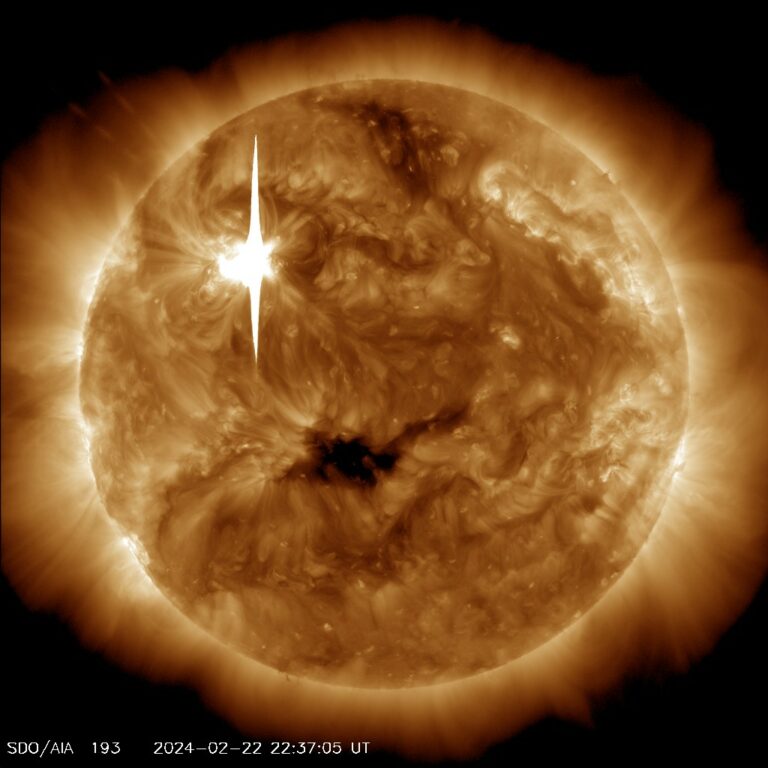Sun fires off powerful solar flare; NASA shares image

On Thursday, February 22, the Sun released a strong solar flare, which peaked at 5:34 p.m. EST. NASA's Solar Dynamics Observatory (SDO), which keeps a constant eye on the Sun, captured an image of the event.
For the unversed, solar flares are powerful bursts of radiation that can last from minutes to hours. Harmful radiation from a flare cannot pass through Earth's atmosphere to physically affect humans on the ground. However, when intense enough, they can disrupt satellite operations, communications systems, and power grids.
Flares are classified according to their strength, the smallest ones are A-class, followed by B, C, M, and X, with X representing the strongest class. Thursday's event was classified as X6.3.
The Sun emitted a strong solar flare on Feb. 22, 2024, peaking at 5:34 p.m. EST. NASA’s Solar Dynamics Observatory captured an image of the event, which was classified as X6.3. https://t.co/ltkQU9Izqw pic.twitter.com/qSaPdaP4ij
— NASA Sun & Space (@NASASun) February 22, 2024
The Sun becomes more intense as it approaches solar maximum due to an increase in solar activity, which is part of the Sun's natural 11-year solar cycle. This cycle is characterized by variations in the number of sunspots, solar flares, and coronal mass ejections (CMEs) observed on the Sun.
According to the European Space Agency (ESA), Thursday's event was the strongest solar flare observed during the current solar cycle - Solar Cycle 25. The flare took place close to midnight in Europe, there was no impact on local satellite navigation or communication.
A highly active region of the Sun recently fired off three of the strongest type of solar flare (X-class).The largest, an ‘X6.3’ flare released at 23:43 CET last night was the strongest solar flare observed during the current solar cycle.#SolarFlare #SpaceWeather pic.twitter.com/lAkBGOkksW
— ESA Operations (@esaoperations) February 23, 2024
- READ MORE ON:
- solar flare
- solar maximum
- NASA









